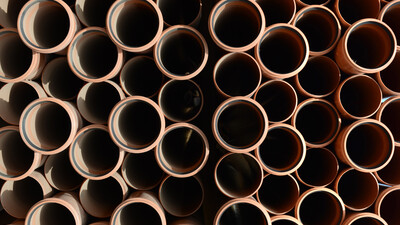Wastewater and surface water: The difference
Wastewater
Wastewater is the water discharged from toilets, baths, showers, basins, sinks, washing machines and dishwashers. If it comes from toilets it is also known as foul water, while from other sources it is known as grey water.
Foul water must always be directed to a main sewer, septic tank or sewage treatment plant. On the other hand, grey water can either be returned to the environment or used for applications such as flushing toilets to reduce the consumption of potable mains water supply.
Surface water
Surface water, also known as rainwater or stormwater, is the result of rain or melted snow collected from roofs, roadways and drives. Providing it isn’t runoff from a potentially contaminated surface such as a fuel station forecourt, surface water can be returned directly to the environment.
Uncontaminated surface water can also be harvested, filtered and reused for functions such as irrigation and car washing.
The importance of keeping wastewater and surface water separate
Until 1970, most houses were fitted with combined drains that mixed all wastewater and surface water in one system. Often this untreated mixture was simply discharged into the nearest river or watercourse. But by 1970, concerns about public health had reached such a pitch that separate drainage systems for wastewater and surface water began to be introduced.
Even now, some older properties still have a combined system. Some houses built after 1970 also have combined systems, but these direct both wastewater and surface water to a water treatment facility.
While property owners aren’t legally obliged to change older drainage systems and some areas lack the infrastructure to create separate systems, combined drains still run a higher risk of polluting the environment.
What do underground drainage pipes look like?
While underground drainage pipes were traditionally made from vitreous clay, cast iron, pitch fibre or asbestos cement, modern systems are mostly manufactured in PVC, a hardwearing and almost maintenance-free plastic. Clay systems are still manufactured in the UK, however, where they remain popular with some developers, particularly for commercial installation.
The pipes and fittings used in modern underground drainage systems are almost always terracotta orange. This makes it easier to differentiate them from above-ground soil pipes, which are usually black, white or grey.
What are the benefits of PVC underground drainage systems?
Compared with more traditional materials, PVC pipes and fittings are more resistant to ground movement, don’t corrode and have a smoother inner wall that gives better flow efficiency than the older materials.
They are also much lighter and easier to transport and even rigid PVC pipes have a degree of flexibility that other materials don’t.
PVC pipe is less fragile but more easily cut than other materials, using a fine-toothed handsaw.
How long do PVC underground drainage systems last?
Providing it is properly installed and regularly maintained, a PVC underground drainage system should last for fifty to a hundred years or more.
Any signs that a drain might be starting to block should be investigated promptly; these include reduced flow, gurgling sounds or foul odours.
Can a PVC underground drainage system be connected to another pipe material?
A new underground drainage system will often need to connect to older clay, iron or cement pipes, particularly where drains are installed in previously developed areas. One of the simplest ways to join different systems is to use a flexible connector. Made of a rubber-like material, these connectors have differing inlet and outlet diameters to match the new and old pipes and use stainless steel worm drive hose clips to create a lasting, watertight seal.
What’s the difference between plain and socketed drainage pipes?
Plain drainage pipes maintain the same internal and external diameter along their entire length and require separate couplings to join them.
Socketed drainage pipes incorporate a wider (female) opening at one end with an internal diameter equal to the external diameter of the other (male) end. This allows lengths of socketed drainage pipe to be slotted together without couplings.
Plain-ended drainage pipes tend to be more popular nowadays for domestic drainage, where a choice of couplings will typically be used to create drainage systems that serve multiple outlets. Longer stretches of uninterrupted drain, however, may be faster and easier to install if socketed pipe is used.
How is drainage pipe measured?
In the UK, 110mm is the most common PVC drainage pipe size used for domestic installations, while 160mm is used for a main flow pipe that serves several dwellings. Larger pipe sizes – 200mm, 250mm, 300mm and 400mm – are also used for higher-capacity and heavier-duty applications.
These measurements refer to the outside diameter of the pipe. On a plain end pipe, the measurement will remain constant along the entire length of the pipe whereas on a socketed pipe, it will be the external diameter of the wider (female) end only.
We hope you have found this information helpful and interesting. If you have any further questions, you are always welcome to call the friendly team of drainage experts at Drainfast on 01420 555600 or email [email protected].
Also, look out for more articles in our ongoing series of blog posts, bringing you useful information, insights, guides and tips on all things drainage!

Written by
Vicki James
Sales & Marketing Coordinator
Vicki is a vital part of the marketing team; from reporting to copywriting, she ensures we complete projects on time.

